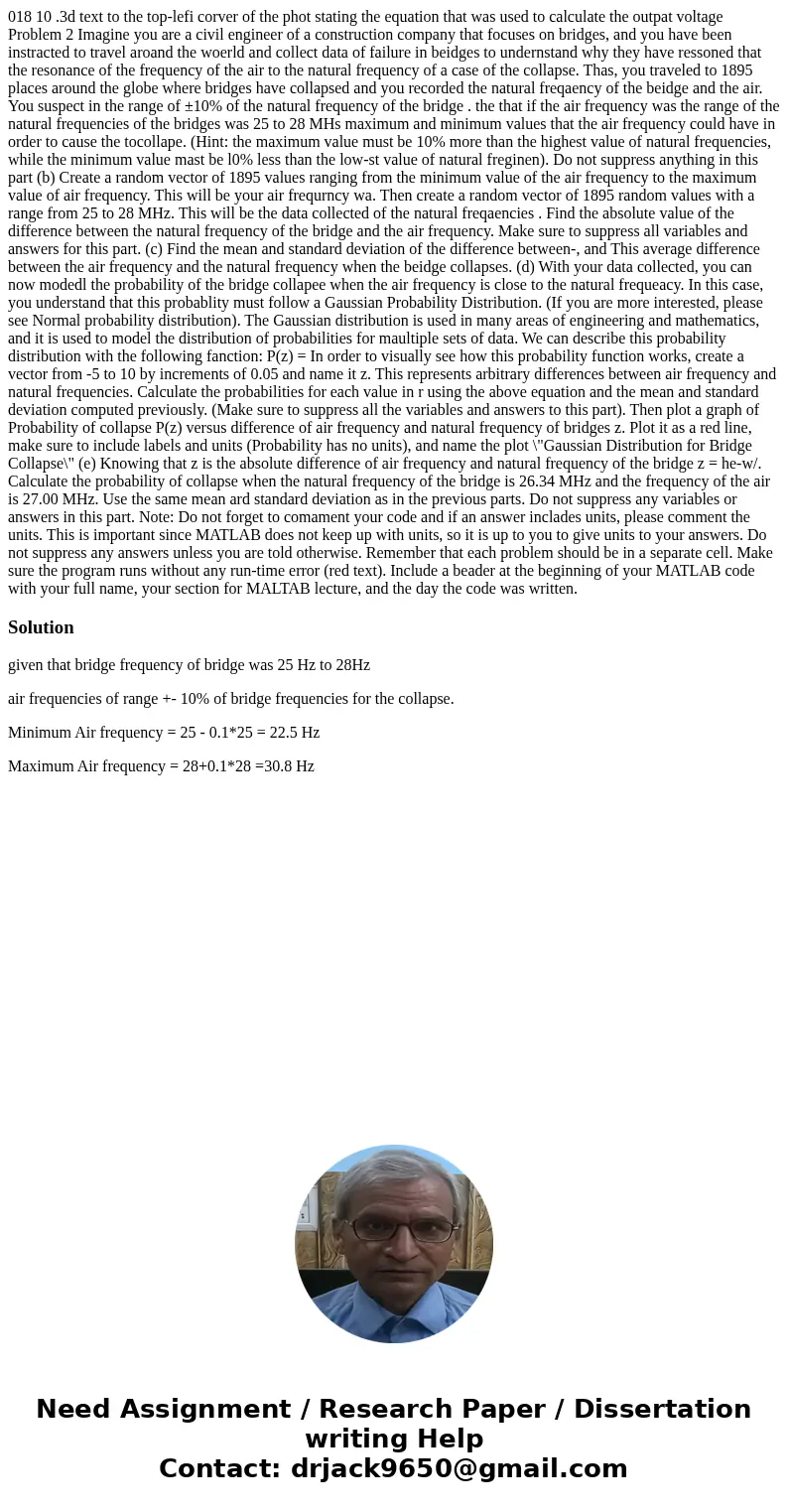018 10 3d text to the toplefi corver of the phot stating the
018 10 .3d text to the top-lefi corver of the phot stating the equation that was used to calculate the outpat voltage Problem 2 Imagine you are a civil engineer of a construction company that focuses on bridges, and you have been instracted to travel aroand the woerld and collect data of failure in beidges to undernstand why they have ressoned that the resonance of the frequency of the air to the natural frequency of a case of the collapse. Thas, you traveled to 1895 places around the globe where bridges have collapsed and you recorded the natural freqaency of the beidge and the air. You suspect in the range of ±10% of the natural frequency of the bridge . the that if the air frequency was the range of the natural frequencies of the bridges was 25 to 28 MHs maximum and minimum values that the air frequency could have in order to cause the tocollape. (Hint: the maximum value must be 10% more than the highest value of natural frequencies, while the minimum value mast be l0% less than the low-st value of natural freginen). Do not suppress anything in this part (b) Create a random vector of 1895 values ranging from the minimum value of the air frequency to the maximum value of air frequency. This will be your air frequrncy wa. Then create a random vector of 1895 random values with a range from 25 to 28 MHz. This will be the data collected of the natural freqaencies . Find the absolute value of the difference between the natural frequency of the bridge and the air frequency. Make sure to suppress all variables and answers for this part. (c) Find the mean and standard deviation of the difference between-, and This average difference between the air frequency and the natural frequency when the beidge collapses. (d) With your data collected, you can now modedl the probability of the bridge collapee when the air frequency is close to the natural frequeacy. In this case, you understand that this probablity must follow a Gaussian Probability Distribution. (If you are more interested, please see Normal probability distribution). The Gaussian distribution is used in many areas of engineering and mathematics, and it is used to model the distribution of probabilities for maultiple sets of data. We can describe this probability distribution with the following fanction: P(z) = In order to visually see how this probability function works, create a vector from -5 to 10 by increments of 0.05 and name it z. This represents arbitrary differences between air frequency and natural frequencies. Calculate the probabilities for each value in r using the above equation and the mean and standard deviation computed previously. (Make sure to suppress all the variables and answers to this part). Then plot a graph of Probability of collapse P(z) versus difference of air frequency and natural frequency of bridges z. Plot it as a red line, make sure to include labels and units (Probability has no units), and name the plot \"Gaussian Distribution for Bridge Collapse\" (e) Knowing that z is the absolute difference of air frequency and natural frequency of the bridge z = he-w/. Calculate the probability of collapse when the natural frequency of the bridge is 26.34 MHz and the frequency of the air is 27.00 MHz. Use the same mean ard standard deviation as in the previous parts. Do not suppress any variables or answers in this part. Note: Do not forget to comament your code and if an answer inclades units, please comment the units. This is important since MATLAB does not keep up with units, so it is up to you to give units to your answers. Do not suppress any answers unless you are told otherwise. Remember that each problem should be in a separate cell. Make sure the program runs without any run-time error (red text). Include a beader at the beginning of your MATLAB code with your full name, your section for MALTAB lecture, and the day the code was written. 
Solution
given that bridge frequency of bridge was 25 Hz to 28Hz
air frequencies of range +- 10% of bridge frequencies for the collapse.
Minimum Air frequency = 25 - 0.1*25 = 22.5 Hz
Maximum Air frequency = 28+0.1*28 =30.8 Hz

 Homework Sourse
Homework Sourse